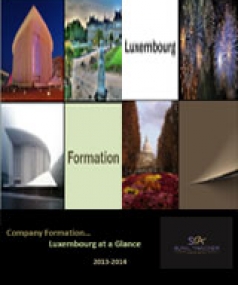India: Minerals and Mining Laws and Regulations
Introduction
 Oil and coal have been the most desirable commodities for economies around the world. A country that owns these has the potential to become a global superpower. Due to rising environmental concerns, however, governments are taking steps and measures to utilize more sustainable measures of creating energy; therefore, there has been major disinvestment in the coal mining industry all over the world pursuant to the climate change conference in Paris. Almost 200 nations agreed to lower their carbon emissions and all other such practices that contribute to global warming. India and China are the largest consumers of coal globally; therefore, as per the Paris Agreement, these countries are required to focus on measures that will facilitate the reduction of emissions in such a way that it aligns with their national economic growth objectives.
Oil and coal have been the most desirable commodities for economies around the world. A country that owns these has the potential to become a global superpower. Due to rising environmental concerns, however, governments are taking steps and measures to utilize more sustainable measures of creating energy; therefore, there has been major disinvestment in the coal mining industry all over the world pursuant to the climate change conference in Paris. Almost 200 nations agreed to lower their carbon emissions and all other such practices that contribute to global warming. India and China are the largest consumers of coal globally; therefore, as per the Paris Agreement, these countries are required to focus on measures that will facilitate the reduction of emissions in such a way that it aligns with their national economic growth objectives.
In lieu of this Agreement, India is focused on expanding its mining sector by introducing new regulations that aim to facilitate the growth of this industry by attracting foreign investment and utilize their national reserves for domestic purposes to its full potential.
Minerals are divided into two categories in India; Major Minerals and Minor Minerals. Major minerals are governed by the Central government; hence, there is uniformity in its application across the country. Minor minerals are governed by State regulations as per the powers delegated to them. The Legislations that govern the mining sector in India are:
- Mines Act, 1952 and Mines Rules 1955
- Mines and Minerals (Development and Regulations) Act, 1957
- Mineral Concession Rules, 1960
- Mineral Conservation and Development Rules, 1988
- Minerals (other than Atomic and Hydro Carbon Energy Minerals) Rules, 2016
- Offshore Areas Minerals (Development and Regulations) Act, 2002
- Offshore Areas Mineral Concession Rules, 2006
As per the above enumeration of legislations, we can understand the extent of control that the government has over the mining sector of the country. Apart from the aforementioned, there are also state regulations that are specific to individual states in the country, for example, the Maharashtra Minor Minerals Extraction (Development and Regulation) Rules, 2013.
Out of the aforementioned, the MMDR, 1957 is the principal legislation for the development of mines and minerals in India.
Legal framework
The legal framework surrounding the coal and mining sector in India has gone through an evolution over the years. Initially, the regime that was adopted was more socialist in nature for the promotion of foreign and private investment through exploration, mining and minerals. Gradually, this industry started to see an upsurge in private sector investment; however, this upsurge was not as effective as expected, considering many areas remained unexplored. Therefore, this called for the introduction of the Mines and Minerals (Development and Regulations) Act, 1957 that brought about a change in the licensing regime and introduced new types of licenses that could be procured for the furtherance of the aim of the Act, such as, the reconnaissance permit, large area prospecting license, etc.
The Central government has consolidated its control over the mining industry thereafter; however, this consolidation was relaxed in 2006 when it allowed for 100 percent foreign direct investment for mining and exploration of precious metals and stones.
Taking into consideration the ineffectiveness of the policies and changes in laws that were being brought about, the government then introduced a new national mining policy in 2008 that called for the integration of technology in the mining sector to ensure optimal utilization of resources and to make the commercial aspect more fruitful. It aimed to promote transparency in order to invoke a sense of trust within the investors and create a more conducive and secure environment for business. With the aim of promoting foreign as we well as private interests, the conditions to get admitted as an investor was relaxed along with allowing concessions on certain minerals.
Mines and Minerals (Development and Regulation) Act, 1957
The mining industry in India is regulated extensively through a wide range of authorities such as:
- Ministry of Mines
- Geological Survey of India, i.e. attached to the Ministry of Mines
- Indian Bureau of Mines, i.e. Subordinate to the Ministry of Mines
- Ministry of Environment, Forest and Climate Change
The enactment of the MMDR, 1957, was to ensure smooth mining operations by adhering to the objective of sustainable mining and allowing growth and development in the mining sector. Though this Act has gone through some changes in recent years, it becomes necessary to first examine these provisions to understand the basic application of mining laws in the country.
Features of the MMDR Act, 1957
Some important provisions of the MMDR Act, 1957 are enumerated as under;
- The responsibility to grant and approve licenses lies with the state governments, as per the state list appended to the Constitution of India. Activities such as carrying out mining processes and conducting surveys are regulated by the GSI, Controller of Mining Leases and the Indian Bureau of Mines.
- The Act clearly lays down the terms, conditions and rights granted under the Act, and it further imposes certain restrictions on the grant of licenses and leases.
- The Act stipulated a maximum area of 10 sq. km to any person who has acquired a mining license; however, this area can be extended or increased as per the discretion of the Central Government upon application for the same.
- Depending on the minerals being explored, a mining lease may be issued for a minimum period of 20 years that may extend up to a maximum period of 30 years. This lease is subject to renewal for a period of 20 years, subject to approval by the Central Government.
- Any entity that acts in contravention to the provisions provided for prospecting lease and mining license shall be punishable with imprisonment for a term of 5 years or with a fine which may extend to Rs. 5, 00,000, or both.
- Any contravention of the Rules or Act shall be punishable with imprisonment for a term that may extend to 2 years or with a fine that may extend up to Rs. 5, 00,000, or both.
- In case of continued contravention, an additional fine may be imposed on the entity, which may extend up to Rs. 50,000 for every day the contravention continues.
- In the case of illegal mining, fines may extend up to 10 times the value of minerals mined or three years imprisonment or both; the contravener may be debarred from obtaining any future concessions, and it may also attract cancellation of the mineral concessions held by the convicted person.
Challenges
 Crime and illegal activities are part and parcel of growth and development. So is the case in the mining sector as well. Over the course of the last decade, the mining sector has seen an increase in illegal mining. There has been a rampant increase in unscientific and environmentally harmful mining over the years; even today, in states like Goa and Orissa, environmental activists are still fighting for the removal of such illegal miners.
Crime and illegal activities are part and parcel of growth and development. So is the case in the mining sector as well. Over the course of the last decade, the mining sector has seen an increase in illegal mining. There has been a rampant increase in unscientific and environmentally harmful mining over the years; even today, in states like Goa and Orissa, environmental activists are still fighting for the removal of such illegal miners.
In Manohar Lal Sharma v. The Principal Secretary& Ors., Writ Petition (Cri.) No. 120 of 2012, the Supreme Court held that there should be a cancellation of coal blocks allocated by the government in 1993 on the grounds that the procedure followed by the Central Government was in contravention of the MMDR Act, in terms of arbitrariness and non-transparency of procedures.
Further, in another case Re: Natural Resource Allocation, SR number 1 of 2012, the Supreme Court held that auctioning of natural resources was not a constitutional mandate and is merely a means to benefit businesses by serving as an alternative form of revenue.
Amendments to the Act and Rules
Mineral Laws (Amendment) Act, 2020
There arose a need to liberalize the coal and mining industry regulations in order for it to reach its full potential and attract foreign direct investment. For this purpose, it became absolutely imperative for the government to ease the restrictions imposed by the MMDR 2015 and MMDR 1957. The introduction of the bill will allow 100% foreign direct investment in coal mining operations; further, it aims at reducing importation of coal and increasing domestic and national production thereof.
Features
- As per the old Act, companies purchasing coal under Schedule II and III through auctions could only utilize coal extracted for end-use purposes like power generation and steel production.
The Amendment provides relief to these companies permitting them to carry out operations for sale, use, in their subsidiaries, or any other such purpose, as permitted by the central government.
- The old Act recognized two types of licenses, namely, the Prospecting license and mining license. The Amendment recognizes a third type that integrates the two allowing the licensee to prospect and license coal, called the license-cum-mining lease. Further, holders of a non-exclusive reconnaissance license can acquire a prospecting and mining license, as opposed to the previous Act that did not permit them to do so.
- The old Act required new licensees to obtain new statutory clearances before the commencement of their mining operations. However, now the various permits, licenses and clearances granted to the old licensee shall be transferred in the name of the effective bidder for the initial two years.
- The Central government can now decide the allocation and reallocation of terminated mining allotment orders as per their discretion and designate a custodian for the same until the mines are reallocated.
- As per the old Act, the state government was required to obtain approval from the central government in order to issue licenses, permits and leases. This requirement has now been relaxed, and the state government is not required to obtain approval in certain cases, such as in the event the central government has already made allocation or when the federal government has reserved a mining block for resource protection.
- Prior experience in the coal and mining industry in India is not a contributor to the eligibility of the company to participate in an auction.
Private participation
New regulations allowing private participation in the mining sector is a double-edged sword; that is, it has its fair share of advantages and disadvantages.
The coal mining industry has been dominated by the public sector for decades on end; the new regulations open up this sector to private participants with the aim to draw in more investors. This new regulation has relegated the minority status of the private sector by opening up biddings through coal mine auctions. On the one hand, this seems like a great step towards attracting investment but, on the other hand, it is highly unlikely that there would be a large flow of investors, as expected in the wake of the pandemic.
Energy security has always been an economic driver for the country, contributing to the GDP; however, over the years, there have been several shortfalls in meeting the requisite targets of imports.
Further, the goal of driving up demand is highly unlikely to be met considering the costs that would be incurred in an attempt to procure cheaper coal; costs such as miner’s prices, government taxes, transportation costs, etc., need to be taken into consideration before investing in the industry. The new regulations only affect the miner’s costs only by a small amount; therefore, no drastic change in the pricing is bring brought about through these regulations.
The new regulations are said to open up new mines in order to explore the full potential of national reserves. However, new mines may take years to develop, therefore, putting any developer or potential investor in a frenzy as to whether investing in such mines is a risk they are willing to take.
Concerns and criticisms
The new Amendment raises a vast array of environmental concerns, considering that the whole world is moving towards more sustainable alternatives to fossil fuels and India, on the other hand, is trying to capitalize on the same by increasing demand and supply.
In keeping with the aim of attracting foreign investment in the coal and mining sector, India is jeopardizing its commitments made under the Paris Agreement, consequently jeopardizing the health and safety of employees that is a natural result of inhaling toxic fumes.
The new Amendment also opens its doors for potential overexploitation of resources through increased competition and rivalry in the sector.
In a recent case, South West Port Limited through its Unit Head & Authorized signatory Anthony Fernandes v. State of Goa, through the Chief Secretary, Government of Goa, Secretariat & Others Writ Petition No. 173 Of 2018, the issue arose when the Petitioner’s application for terminal entrenchment was denied by the Ministry of Environment, Forest and Climate Change in Goa. The MOEFCC had denied the application on the grounds that the Petitioner’s application cannot be considered under the order passed by the National Green Tribunal since the specifics of the regulations do not comply with said order.
To this, the Petitioner argued that the MEOFCC does not have the authority to determine the merits of the application. He further cited all the other authorities that granted approval for the same application.
Preliminary objections were raised by the Respondents, saying that several material facts have not been disclosed by the Petitioner and that if allowed to continue, the Petitioner’s continuous existence in this area shall be hazardous to the health and safety of residents.
The High Court, therefore, held that there did not exist any extraordinary circumstances in favor of the Petitioner and upon examination of the evidence and the documents present by him, it is deduced that, despite the petition being for a limited purpose, the ultimate aim of the Petitioner is to expand their activities at the Port. Further, the court also held that the Petitioner did not exhaust its alternative remedies before approaching the High Court; however, the High Court has the discretion to entertain a writ petition depending on the conduct of the Petitioner. Therefore, in view of the aforesaid, the Petitioner’s claims were rejected, and the writ petition was dismissed.
 Conclusion
Conclusion
No doubt, the steps were taken towards improving the mining sector are appreciated. However, such an appreciation cannot be done without speculation. The positive approach of this new Amendment is met with a long list of problems that need to be revisited and considered in immense detail so as to achieve the goal of operational proficiency and successful usage of national assets.
 English
English
 عربي
عربي Русский
Русский 官话
官话 português
português
 Türk
Türk 








